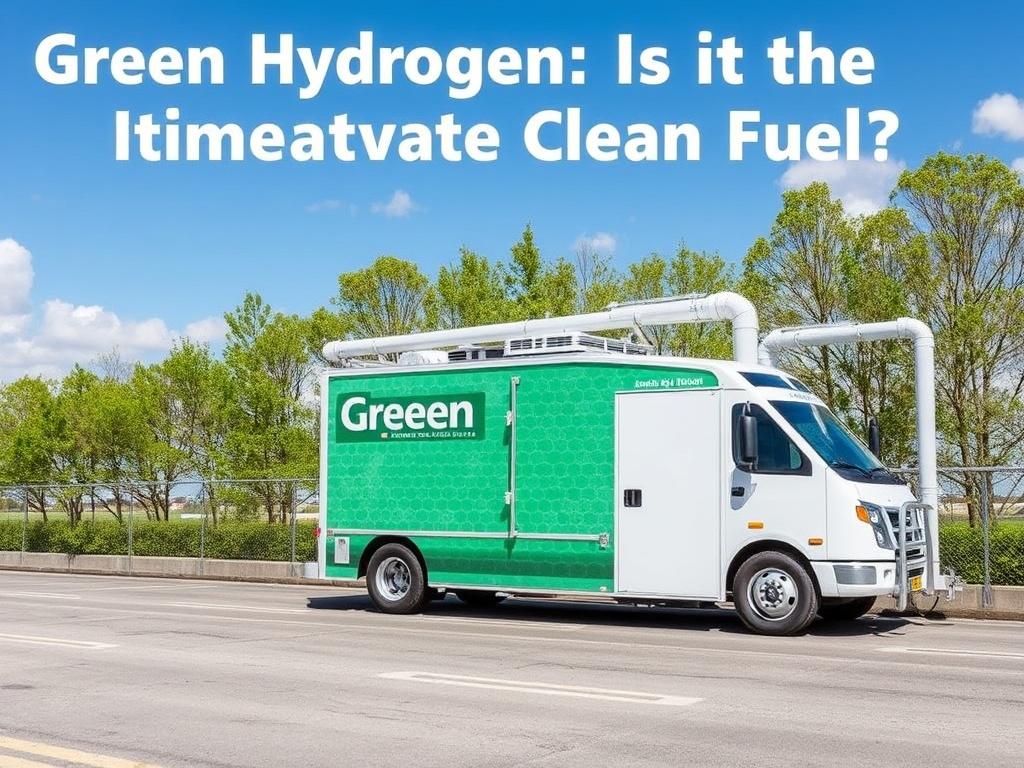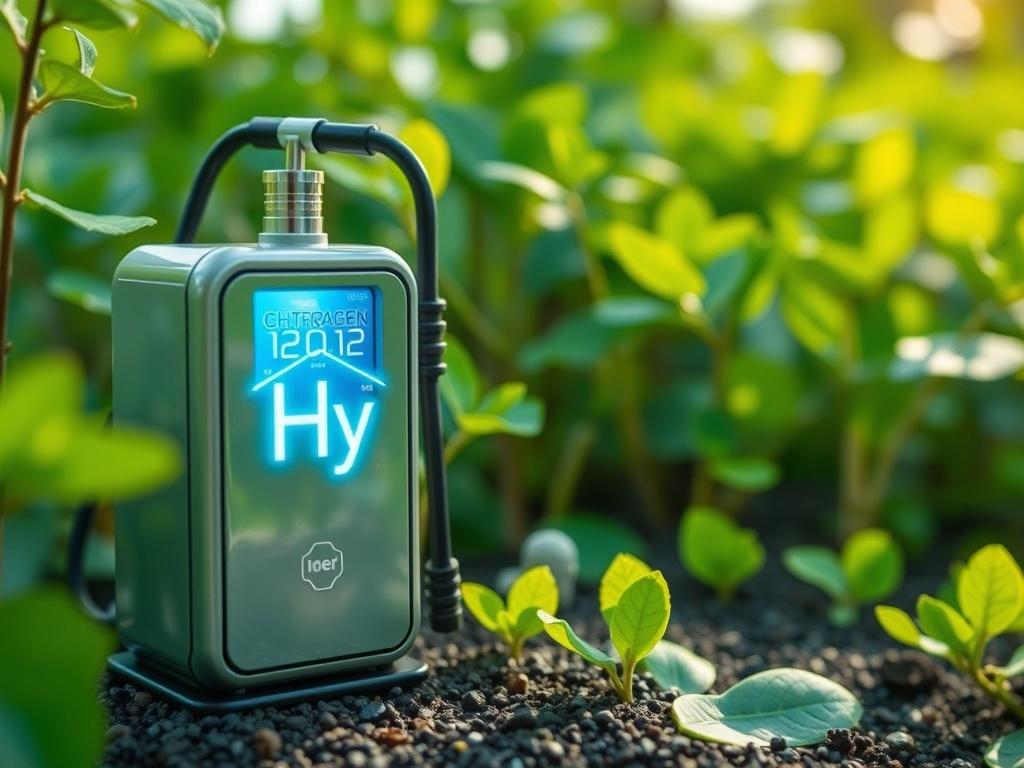- What is Green Hydrogen?
- How is Green Hydrogen Produced?
- Types of Electrolysis Technologies
- Benefits of Using Renewable Energy for Electrolysis
- Why is Green Hydrogen Considered the Ultimate Clean Fuel?
- Applications of Green Hydrogen
- Challenges Facing Green Hydrogen
- Cost of Production
- Infrastructure and Storage
- Energy Efficiency
- Scaling Up Renewable Energy
- Global Developments and Future Outlook
- How Green Hydrogen Compares to Other Clean Energy Options
- Steps Toward Making Green Hydrogen Mainstream
- Environmental and Economic Impacts
- Common Misconceptions About Green Hydrogen
- Green Hydrogen Success Stories and Pilot Projects
- Key Green Hydrogen Initiatives by Industry Leaders
- The Road Ahead: Challenges and Opportunities
- Conclusion
In the quest for sustainable energy solutions, green hydrogen has emerged as a beacon of hope. It promises a clean, renewable alternative to traditional fossil fuels, offering the potential to power everything from cars to entire industries without releasing harmful emissions. But what exactly is green hydrogen, and why is it being hailed as the ultimate clean fuel? In this article, we will explore the science behind green hydrogen, its production methods, advantages, challenges, and its role in shaping the future of energy.
What is Green Hydrogen?
At its core, hydrogen is the simplest and most abundant element in the universe. When used as a fuel, it burns or reacts with oxygen to produce energy and water—no carbon dioxide or pollutants. However, not all hydrogen is created equal. The difference lies in how it’s produced. Green hydrogen is produced through a process called electrolysis, where renewable electricity splits water into hydrogen and oxygen. This process generates hydrogen without any carbon emissions, making it truly green and sustainable.
Other forms of hydrogen, often referred to as “grey” or “blue” hydrogen, are produced using fossil fuels like natural gas, and often emit carbon dioxide during production. This makes green hydrogen a cleaner and more desirable alternative, especially as nations aim for net-zero emissions.
How is Green Hydrogen Produced?
The production of green hydrogen revolves around a simple yet efficient process known as electrolysis. Here’s how it works: water molecules (H2O) are split into hydrogen (H2) and oxygen (O2) gases by passing an electric current through the water. The electricity used comes from renewable sources such as wind, solar, or hydroelectric power, ensuring that the process does not generate carbon emissions.
Types of Electrolysis Technologies
There are several types of electrolysis technologies used to produce green hydrogen, each with its own benefits and challenges:
- Alkaline Electrolysis: The most mature and commercially available technology, alkaline electrolysis uses a liquid alkaline solution as the electrolyte. It is relatively inexpensive but operates best at lower current densities, meaning it may produce hydrogen at a slower rate.
- Proton Exchange Membrane (PEM) Electrolysis: PEM electrolyzers use a solid polymer electrolyte membrane. They have faster response times and operate at higher current densities, making them more suitable for integration with variable renewable energy sources.
- Solid Oxide Electrolysis: Operates at high temperatures (around 700-1000°C) and can achieve higher efficiencies by utilizing heat as well as electricity. Still largely in the research and development phase, it offers exciting prospects for the future.
Benefits of Using Renewable Energy for Electrolysis
Pairing water electrolysis with renewable energy sources is what makes hydrogen “green.” This coupling ensures the entire production process remains free of greenhouse gas emissions. Unlike grey hydrogen, which relies on fossil fuels and emits large amounts of CO2, green hydrogen production is sustainable and clean.
| Hydrogen Type | Production Method | Carbon Emissions | Renewable Energy Use |
|---|---|---|---|
| Green Hydrogen | Electrolysis powered by renewable electricity | Zero emissions | 100% |
| Blue Hydrogen | Natural gas reforming with carbon capture and storage | Low emissions (mitigated) | None |
| Grey Hydrogen | Natural gas reforming without carbon capture | High emissions | None |
Why is Green Hydrogen Considered the Ultimate Clean Fuel?
Green hydrogen is gaining traction around the world as a potential game-changer in the clean energy landscape for several compelling reasons. First and foremost, it produces zero carbon emissions or air pollutants during its use, making it a perfect fuel for the fight against climate change and air pollution. Moreover, hydrogen’s versatility allows it to be used in sectors that are difficult to electrify, such as heavy industry, shipping, and aviation.
Another important factor is energy storage. Renewable energy generation like wind and solar can be intermittent, producing electricity when the sun shines or the wind blows. Green hydrogen offers a way to store that excess renewable electricity by converting it into a storable fuel. This stored hydrogen can then be used on demand, helping balance supply and demand on power grids and enhancing energy security.
Also, hydrogen’s high energy density per unit mass means it packs more energy into less weight compared to batteries, a critical advantage for transportation applications that need long ranges and quick refueling times.
Applications of Green Hydrogen
The applications of green hydrogen are broad and growing rapidly. Here are some key areas where it is making an impact:
- Transportation: Hydrogen fuel cell vehicles produce only water vapor as exhaust, with fast refueling times and good range. This applies not just to cars, but also buses, trucks, ships, and even airplanes.
- Industry: Industries like steel production, ammonia manufacturing, and refining are major carbon emitters. Using green hydrogen as a feedstock or fuel can drastically cut emissions.
- Power Generation: Hydrogen can be used in gas turbines to generate electricity, either by blending with natural gas or burning pure hydrogen, offering clean power on demand.
- Heating: Hydrogen can potentially replace natural gas in heating applications for homes and businesses.
Challenges Facing Green Hydrogen
Despite its enormous potential, green hydrogen is not without challenges. Understanding these hurdles is critical to appreciating the pace and scale of its adoption.
Cost of Production
Currently, producing green hydrogen is more expensive than grey or blue hydrogen due to the costs of electrolysis equipment, renewable electricity, and infrastructure. At present, green hydrogen can cost three to six times more than fossil-fuel-based hydrogen. However, costs have been decreasing as electrolyzer technology improves and the cost of renewable power falls.
Infrastructure and Storage
Hydrogen requires specialized infrastructure for production, transport, and storage. It is a very light, highly flammable gas that needs to be compressed or liquefied to be moved efficiently. Building pipelines, storage tanks, and fueling stations is capital-intensive and time-consuming.
Energy Efficiency
The process of converting electricity into hydrogen and then back into electricity or mechanical energy is less efficient than direct use of electricity, such as in battery electric vehicles. This means some energy is lost along the way, affecting overall system efficiency.
Scaling Up Renewable Energy
Green hydrogen production depends heavily on abundant renewable energy. Many regions still lack sufficient renewable capacity to produce hydrogen at scale without impacting other uses of electricity.
Global Developments and Future Outlook

Governments around the world are waking up to the promise of green hydrogen and are investing heavily in research, development, and production facilities. The European Union has laid out strategies to integrate green hydrogen into its economy, targeting gigawatts of electrolyzer capacity by 2030. Similarly, countries like Japan, South Korea, and Australia are developing hydrogen hubs and supply chains, aiming to become leaders in the clean hydrogen economy.
Private companies, from energy giants to startups, are also accelerating innovation. Technological breakthroughs in electrolyzer efficiency, cost reduction, and hydrogen storage are pushing green hydrogen closer to competitiveness with fossil fuels.
| Region | Key Initiatives | Projected Capacity (GW by 2030) |
|---|---|---|
| European Union | Hydrogen strategy, funding for electrolyzer projects, hydrogen valleys | 40 |
| Japan | Hydrogen Society roadmap, fuel cell vehicle incentives | 10+ |
| Australia | Export-focused hydrogen projects, renewable hubs | 5+ |
| United States | DOE funding, infrastructure plans, green hydrogen hubs | 15+ |
How Green Hydrogen Compares to Other Clean Energy Options
While green hydrogen is often praised as the ultimate clean fuel, it’s important to consider it within the broader context of clean energy technologies. Here’s a comparison of green hydrogen with other popular clean energy options:
| Energy Solution | Pros | Cons | Best Use Cases |
|---|---|---|---|
| Green Hydrogen | Zero emissions, versatile, energy storage potential | Costly production, infrastructure challenges, energy loss in conversion | Heavy transport, industry, grid balancing |
| Battery Electric Vehicles | High efficiency, existing infrastructure growing | Limited range, long recharge times, resource constraints on batteries | Passenger vehicles, short-range transport |
| Solar and Wind Power | Renewable, low operational costs | Intermittent production, requires storage or backup | Electricity generation, direct power use |
| Biofuels | Can be carbon-neutral, existing fuel infrastructure compatible | Land use competition, lower energy density | Aviation, existing engines |
Steps Toward Making Green Hydrogen Mainstream
Transitioning green hydrogen from a niche solution to a mainstream clean fuel requires coordinated steps across technology, policy, industry, and consumers:
- Increasing Renewable Energy Capacity: Building more solar, wind, and other renewable power sources to supply electrolyzers sustainably.
- Lowering Electrolyzer Costs: Innovating new materials, manufacturing techniques, and economies of scale.
- Building Infrastructure: Developing pipelines, storage facilities, and fueling stations for hydrogen distribution and use.
- Creating Supportive Policies: Carbon pricing, subsidies, and regulatory frameworks to incentivize green hydrogen production and consumption.
- Raising Awareness and Demand: Educating industries and consumers on hydrogen benefits and safety.
Environmental and Economic Impacts

Green hydrogen offers significant environmental benefits by potentially displacing fossil fuels and drastically cutting greenhouse gases. It can improve air quality, reduce dependence on imported oil, and support a sustainable energy future. Economically, green hydrogen technology can create new industries, jobs, and export opportunities.
Yet, the transition must be managed carefully to avoid unintended impacts such as resource overuse or social inequality. A sustainable approach includes responsible sourcing of materials, ensuring equitable access, and integrating hydrogen within local energy ecosystems.
Common Misconceptions About Green Hydrogen
Despite growing interest, several misconceptions about green hydrogen often lead to confusion:
- “Hydrogen is dangerous.” While hydrogen is flammable, safety standards and technologies are well-developed. It can be handled safely with proper infrastructure.
- “Hydrogen will replace all fossil fuels immediately.” The transition will be gradual, with hydrogen complementing other clean technologies rather than fully replacing them overnight.
- “Electrolysis wastes too much energy.” While there is energy loss during conversion, ongoing innovations are improving efficiency, and the ability to store renewable energy offsets some concerns.
- “Only large companies benefit.” Green hydrogen development can create opportunities across the economy, including local job creation and small businesses.
Green Hydrogen Success Stories and Pilot Projects

Several pioneering projects worldwide highlight green hydrogen’s viability and potential. For example, Germany’s “H2 Mobility” is building a network of hydrogen fueling stations to support fuel cell vehicles throughout the country. In the Netherlands, the NortH2 project aims to produce green hydrogen at massive scale using offshore wind farms. Meanwhile, South Korea is developing hydrogen-powered public buses to reduce urban air pollution.
These projects act as testbeds for technology and strategy, building lessons learned that will accelerate broader deployment.
Key Green Hydrogen Initiatives by Industry Leaders
| Company | Initiative | Location | Impact |
|---|---|---|---|
| Siemens Energy | Large scale electrolyzer manufacturing | Germany | Supply green hydrogen for industrial use |
| Shell | Green hydrogen refueling stations and projects | Global | Supporting transport and industry decarbonization |
| Air Liquide | Hydrogen infrastructure and storage solutions | France | Enabling hydrogen economy logistics |
| Plug Power | Fuel cell systems and hydrogen production | USA | Facilitating clean power for logistics and mobility |
The Road Ahead: Challenges and Opportunities
The journey toward widespread green hydrogen adoption is complex but promising. Key challenges such as reducing costs, scaling infrastructure, and integrating hydrogen with existing systems must be met diligently. At the same time, opportunities abound for innovation, economic growth, and global collaboration.
Governments, industry players, researchers, and consumers all play critical roles in shaping the clean hydrogen economy. By working together, deploying smart policies, and investing in technology, green hydrogen can move from an exciting concept to a fundamental pillar of our sustainable energy future.
Conclusion
Green hydrogen stands at the crossroads of science, environment, and energy policy as a powerful contender for the ultimate clean fuel. It offers a zero-emissions solution with vast applications across transportation, industry, and power generation. While challenges like cost and infrastructure remain, technological progress and expanding renewable energy capacities provide a hopeful path forward. As the global community doubles down on clean energy transitions, green hydrogen has the potential to transform how we power our world, driving both environmental sustainability and economic innovation. Whether it becomes the singular ultimate clean fuel or part of a diverse energy mix, green hydrogen is undeniably a cornerstone in the pursuit of a greener planet.
Как вам статья?







